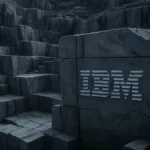Scientists have created a multi-purpose photonic chip that they say paves the way for programmable quantum processors.

The Bristol team has, for the first time, shown that quantum entanglement can be generated, manipulated and measured entirely on a tiny silica chip.
They’ve also used the same chip to measure mixture — an often unwanted effect from the environment, but one which they say can now be controlled and used to characterize quantum circuits, as well as being of fundamental interest to physicists.
“In order to build a quantum computer, we not only need to be able to control complex phenomena such as entanglement and mixture, but we need to be able to do this on a chip, so that we can scalably and practically duplicate many such miniature circuits—in much the same way as the modern computers we have today,” says Professor Jeremy O’Brien, Director of the Centre for Quantum Photonics.
“Our device enables this, and we believe it is a major step forward towards optical quantum computing.”
The chip measures just70 mm by 3 mm, and consists of a network of tiny channels which guide, manipulate and interact single photons. Using eight reconfigurable electrodes embedded in the circuit, photon pairs can be manipulated and entangled, producing any possible entangled state of two photons or any mixed state of one photon.
“It isn’t ideal if your quantum computer can only perform a single specific task. We would prefer to have a reconfigurable device which can perform a broad variety of tasks, much like our desktop PCs today — this reconfigurable ability is what we have now demonstrated,” says Peter Shadbolt, lead author of the study.
“This device is approximately ten times more complex than previous experiments using this technology. It’s exciting because we can perform many different experiments in a very straightforward way, using a single reconfigurable chip.”
The researchers are now working on scaling up the complexity of this device, and see this technology as the building block for the quantum computers of the future.
Dr Terry Rudolph from London’s Imperial College believes this work is a significant advance.
“Being able to generate, manipulate and measure entanglement on a chip is an awesome achievement,” he says.
“Not only is it a key step towards the many quantum technologies — such as optical quantum computing — which are going to revolutionize our lives, it gives us much more opportunity to explore and play with some of the very weird quantum phenomena we still struggle to wrap our minds around.”






